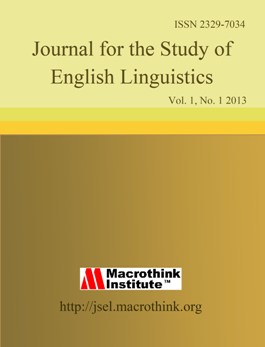The Acquisition of Adverbs by Learners of English as a Second Language in Cameroon
DOI:
https://doi.org/10.5296/jsel.v11i1.21462Keywords:
Language Acquisition, Language Learning, Adverbs, Interlanguage, SLAAbstract
Despite the embedded linguistic capabilities that human beings possess[1], language acquisition still remains a daunting and staggering experience especially to the second language learner who is already comfortable with the first language. While other categories come pretty earlier in the acquisition schedule, adverbs are observed to be quite challenging for learners to acquire and use. It is within this backdrop that this paper investigates the challenges faced by second language learners of English in Cameroon with the aim of identifying the challenges in the acquisition process as learners move from one proficiency level to the other. Grounded on the theory of interlanguage and its ramifications, the paper adopts a mixed method design to collect data from 120 primary school pupils in the English-speaking regions of Cameroon. Both quantitative and qualitative designs are used for data analysis. The findings show that learners exhibited limited knowledge of adverb categories and consequently the adverbs had a very low frequency of occurrence in learners’ productions. Typologically speaking, the highest frequency rate of occurrence was observed with items that give pictorial representations in the learners’ mind as was the case with adverbs that portray independent than subsidiary meaning. That is why comparatively speaking, adverbs of place and time had a higher frequency rate in learners’ productions unlike other typologies. The specificity of structural gap filling tasks at this level was noticeable and memorisation was used to a greater extent as a learning strategy by a good number of learners.
[1] This line of thought is championed by Chomsky.




